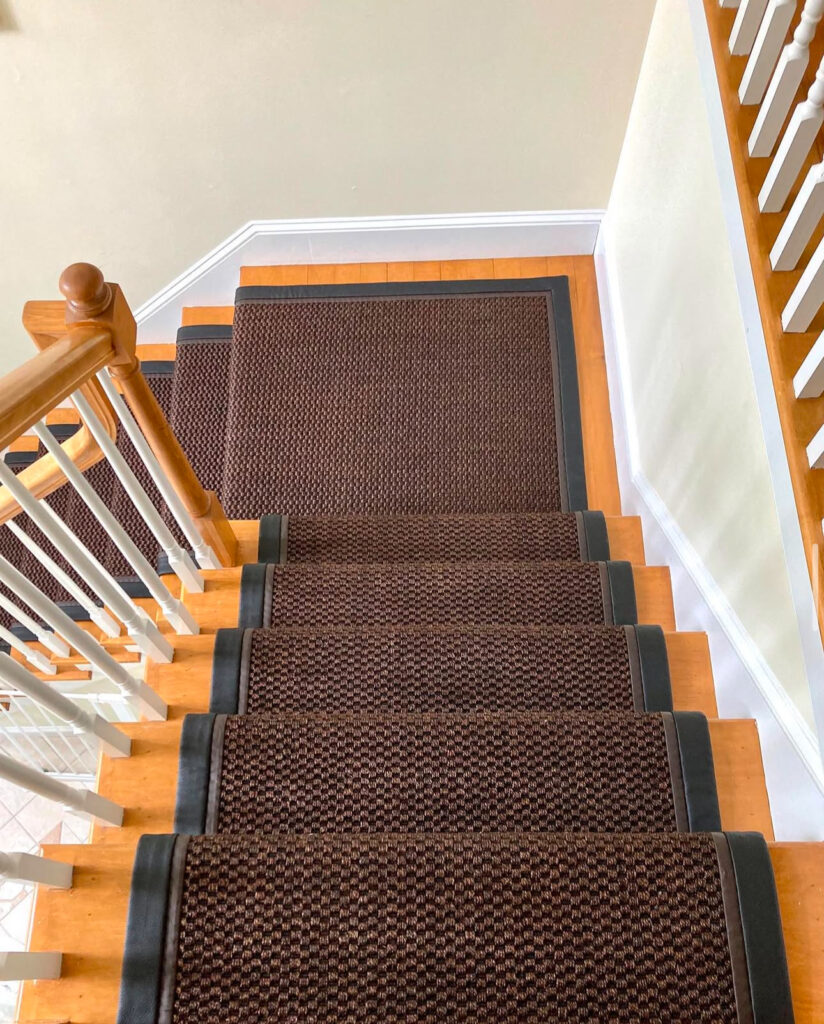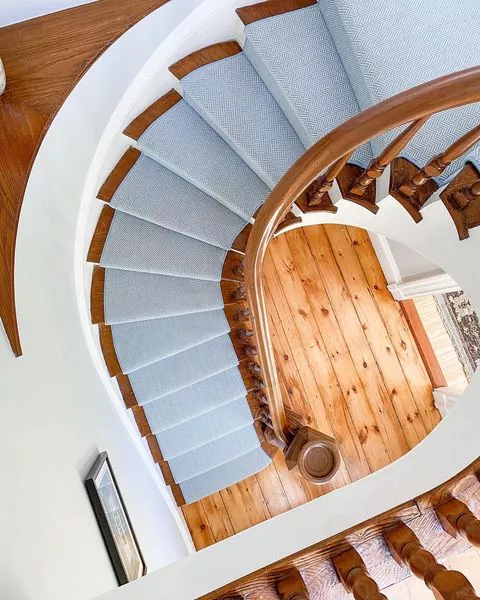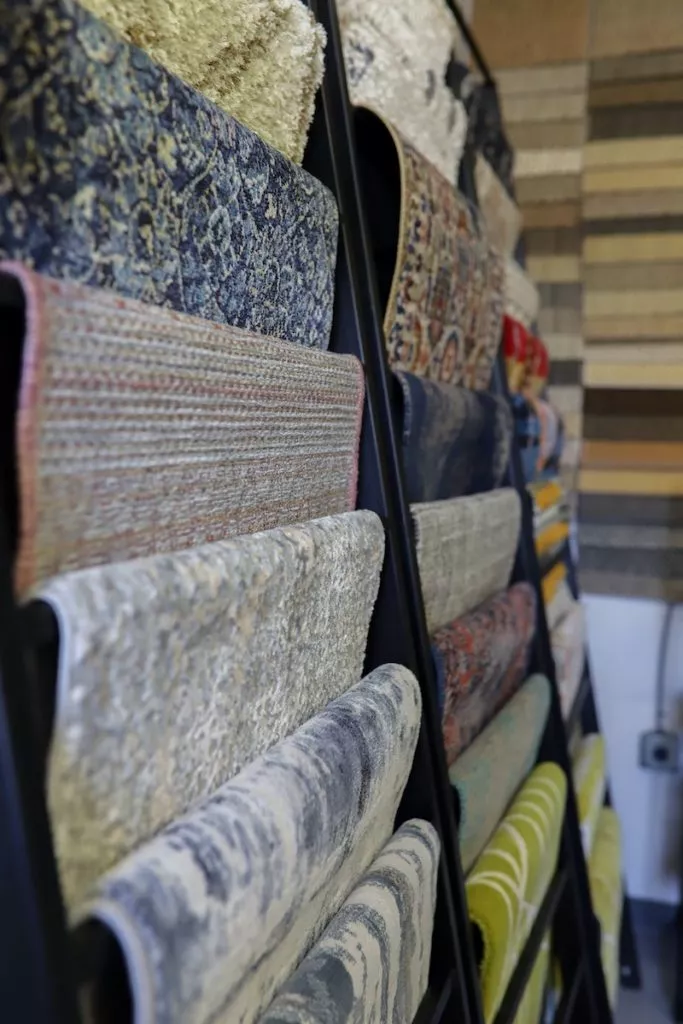Carpet borders are an often-overlooked design element that can completely transform the look of a room. Whether you want to add a touch of sophistication, define spaces, or create a custom aesthetic, carpet borders offer a versatile and stylish solution. From traditional to contemporary designs, the right border can enhance the overall appeal of your carpet while also providing practical benefits.
In this comprehensive guide, we’ll explore the three primary types of carpet borders: Binding, Serging, and Self Edging. You’ll learn about their benefits, installation methods, and how to choose the perfect border for your space.
What Are Carpet Borders?
Carpet borders are decorative trims or edges added to carpets and rugs to create a framed effect. They are used in various applications, including wall-to-wall carpeting, area rugs, stair runners, and hallway carpets. Borders can be made from a variety of materials, including fabric, leather, and contrasting carpet materials. While they are often chosen for their aesthetic appeal, they also serve a functional purpose by reinforcing carpet edges, preventing fraying, and adding durability.
Primary Types of Carpet Borders
1. Binding (Versatile and Decorative)

Binding is the most commonly used carpet border technique. It involves securing the carpet edge with fabric, leather, or synthetic materials to prevent fraying and enhance durability. Binding can be decorative or subtle, depending on the chosen material and width. This method is particularly useful for high-traffic areas and provides a clean, polished finish.
Subcategories of Binding:
- Narrow Binding – This binding method uses a slim, narrow strip of fabric or material along the edge of the carpet. It provides a clean, subtle finish that is both functional and aesthetically pleasing. Ideal for a more understated look, narrow binding keeps the focus on the carpet’s design while preventing fraying.
- Wide Binding – Uses broader fabric strips for a bold, framed effect. Often found in modern or high-end interiors, this creates a dramatic look by adding a pronounced edge.
- Nail Head Binding – This technique adds decorative nail heads along the edge of the carpet, creating a sophisticated, handcrafted look. It’s ideal for luxury settings and pairs well with textured or leather carpets, adding a bold, metallic accent that enhances the overall design. This binding style brings a refined, elegant touch to high-end interiors.
- Double Binding – This technique involves layering two different elements, such as colors, materials, or even textures, along the edges of a carpet to create a rich, multi-dimensional border. The contrasting layers add depth, visual interest, and a custom look that enhances the overall design. Double binding allows for creative flexibility, enabling the combination of complementary or contrasting colors, finishes, or patterns to achieve a unique and dynamic edge.
- Top Stitch Binding – This technique involves stitching a visible, contrasting line of stitches along the carpet’s edge, creating a bold, defined border. The stitches are intentionally shown, adding texture and a handmade feel to the finish. This method provides a clean, modern look while reinforcing the carpet’s edges. It’s often used for its aesthetic appeal in both contemporary and traditional settings, where the stitching itself becomes a key design feature, adding a touch of craftsmanship to the carpet.
Best for: Area rugs, stair runners, hallway carpets, and high-traffic spaces needing a polished edge.
2. Serging (Classic and Textured)

Serging is a technique where yarn is wrapped around the edges of the carpet, creating a continuous stitched finish. It enhances durability and adds a soft, textured border, making it ideal for high-end carpets. This method is commonly used in wool rugs and other premium carpet styles.
Subcategories of Serging:
- Hand-Serged – Hand-stitched for a refined, custom finish, often used in luxury wool rugs where craftsmanship is key.
- Machine-Serged – Machine-applied for a uniform, durable finish suitable for everyday use. This is the most common form of serging.
- Contrast Serging – Uses a different-colored thread to create a bold, decorative outline. It adds a unique visual element that highlights the edges of the carpet.
- Wool Serging – Uses wool yarn to maintain consistency in natural fiber carpets, ensuring a seamless and luxurious look.
Best for: Traditional and premium carpets, wool rugs, and high-quality stair runners.
3. Self Edge (Minimalist and Seamless)

The Self Edging method creates an invisible finish by folding the carpet edges under themselves instead of using external binding or serging. This results in a seamless, modern look that blends naturally with the carpet. It is commonly used in contemporary interior designs where a sleek finish is desired.
Best for: Flat-weave carpets, modern stair runners, and contemporary interiors where an uninterrupted look is preferred.
Benefits of Carpet Borders
1. Enhanced Aesthetic Appeal
A carpet border adds definition to a space, making a carpet or rug look more structured and intentional. Whether you opt for a bold contrast or a subtle tonal variation, a border enhances the overall design.

2. Customization and Personalization
Carpet borders allow homeowners and designers to create unique, one-of-a-kind carpets. You can match the border to your furniture, wall colors, or decor theme, ensuring a cohesive look.
3. Increased Durability
A border not only serves a decorative purpose but also reinforces the edges of the carpet, preventing fraying and wear over time. This is especially beneficial for high-traffic areas such as hallways and staircases.
4. Defined Spaces
Borders help delineate spaces within open-concept homes. For instance, an area rug with a border can visually separate a living room from a dining area, creating a clear distinction between the two spaces.
5. Easy Maintenance
Carpet borders can make maintenance easier by containing dirt and wear to the border area rather than the main body of the carpet. This can extend the lifespan of your carpet and keep it looking newer for longer.
Choosing the Right Carpet Border for Your Space
When selecting a carpet border, consider the following factors:
- Room Size and Layout – In smaller rooms, a narrow border helps maintain a clean, open feel, whereas in larger spaces, a wide border can create a dramatic and elegant effect.
- Color Scheme – Complementary colors enhance cohesion within the space, while contrasting colors create a bold, modern look.
- Carpet Type – Low-pile carpets work well with both fabric and carpet borders, while high-pile carpets may require sturdier borders like leather or thick fabric.
- Traffic and Usage – High-traffic areas benefit from durable, stain-resistant borders, while decorative borders are best suited for formal spaces.
Maintenance Tips for Carpet Borders
- Vacuum regularly to prevent dirt buildup.
- Spot clean spills immediately to avoid stains.
- Use a carpet protector to minimize wear and tear in high-traffic areas.
- Schedule professional cleaning once a year to maintain the border’s integrity and appearance.
Final Thoughts
Carpet borders are a simple yet powerful way to enhance the aesthetic and functionality of your flooring. Whether you prefer a seamless self edge, a classic serged finish, or a bold decorative binding, there’s a border style for every design preference. Investing in high-quality carpet borders enhances both the appearance and longevity of your carpets.
Looking to customize your carpets with a stylish border? The Carpet Workroom offers expert craftsmanship and a variety of border options tailored to your home. Visit The Carpet Workroom to schedule an appointment, and check out our Pinterest page for inspiration!



